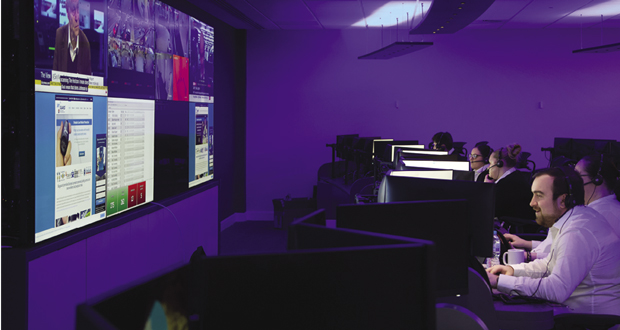Given the dispersal of staff owing to social distancing rules during the Coronavirus, protecting facilities management’s legion of lone workers has never been more important says Peoplesafe CEO Naz Dossa
The diverse set of services required to manage any large premises often means facilities managers will call on several different teams or individuals during all hours of the day – often outsourcing to multiple contactors. Orchestrating the smooth operation of a site is always a complex task, and one that is made even more difficult right now.
As lockdown eases, facilities managers have some high hurdles to jump – and their primary focus will be health and safety. There will be a whole host of new considerations to add to their usual checklist, all of which combine to ensure that they uphold their common and statutory duty to protect the health, welfare and safety of their employees.
For those who manage in-house teams and for those who send their staff to work in various locations, there is one important aspect which cannot be overlooked: lone worker safety. Lone workers are defined by the Health and Safety Executive (HSE) in the UK to be ‘anyone who works by themselves or without close or direct supervision’. This covers those who are completing tasks out of direct sight or earshot of colleagues and supervisors, as well as those who travel alone to a location to do their work. In terms of facilities roles, the definition could cover security guards, night workers, receptionists and cleaning staff. It could also extend to catering operatives or grounds maintenance workers, depending on the circumstances of their work.
Coronavirus has increased the already high numbers of lone workers in the FM setting; depleted workforces, budget constraints and the need for social distancing measures have led to altered shift schedules and more tasks being fulfilled by one person rather than two – sometimes in unfamiliar surroundings. It is therefore vital that every employer understands the steps they should be taking to protect their lone workers appropriately.
UNDERSTANDING THE RISKS
The first step to working out how to protect lone workers is understanding the risks they face. The problem isn’t necessarily that the job they are doing is a more dangerous one; it’s that there is no-one to call on if things go wrong. Threats from the public or from slips, trips and falls become more likely to lead to significant harm. And while some lone workers will value the autonomy of their role, working alone can also have negative psychological effects. Lone workers are far more likely to suffer from psychological distress, anxiety and loneliness than their team-working counterparts.
When it comes to making on-the-spot decisions, lone workers are once again faced with an increased risk. No opportunity for a second opinion means a raised possibility of poor decision making – in some cases leading to workers placing themselves in unnecessary danger or in situations that can quickly escalate and become unmanageable for one person alone.
MITIGATING THE RISK
The risks to lone workers are best understood and reduced through the use of a detailed risk assessment. Anyone with responsibility for employees will need to assess the dangers inherent in their daily tasks and identify ways to reduce those risks. An employer’s responsibilities are laid out by the Health and Safety at Work Act (1974), with requirements for risk assessments made more explicit through the Management of Health and Safety at Work Regulations 1999. It is here that employers can find detailed guidance on what precisely a risk assessment should entail – and this is broken down into practical steps on the HSE’s own website .
It’s important to note that, alongside this, the HSE has recently updated its guidance on lone workers, in recognition of the fact that there will always be greater risks to those working alone. The guidance requires that lone workers are properly trained, monitored and supervised, and also that employers ‘keep in touch with them and respond to any incident’.
FACILITATING BETTER COMMUNICATION
When it comes to fulfilling the regulatory requirement to monitor, supervise, stay in touch with and respond to incidents affecting their lone workers, today’s facilities managers are fortunate to have access to a wide range of communications technology; from smartphones that have become a part of everyday life to dedicated personal safety devices with GPS tracking, two-way audio and fall detection capabilities built in. Lone worker safety expert Peoplesafe provides a broad range of solutions; giving employers the option to select a mixture of different devices for different lone working roles. And to give busy managers extra peace of mind, all devices are connected to its purpose-built 24-hr Alarm Receiving Centre (ARC).
The best next step for FMs reopening their sites will be to revisit and refresh risk assessments; to determine how health and safety changes will affect the physical and mental health of their employees and to consider what additional equipment might be needed to protect and reassure lone workers.





